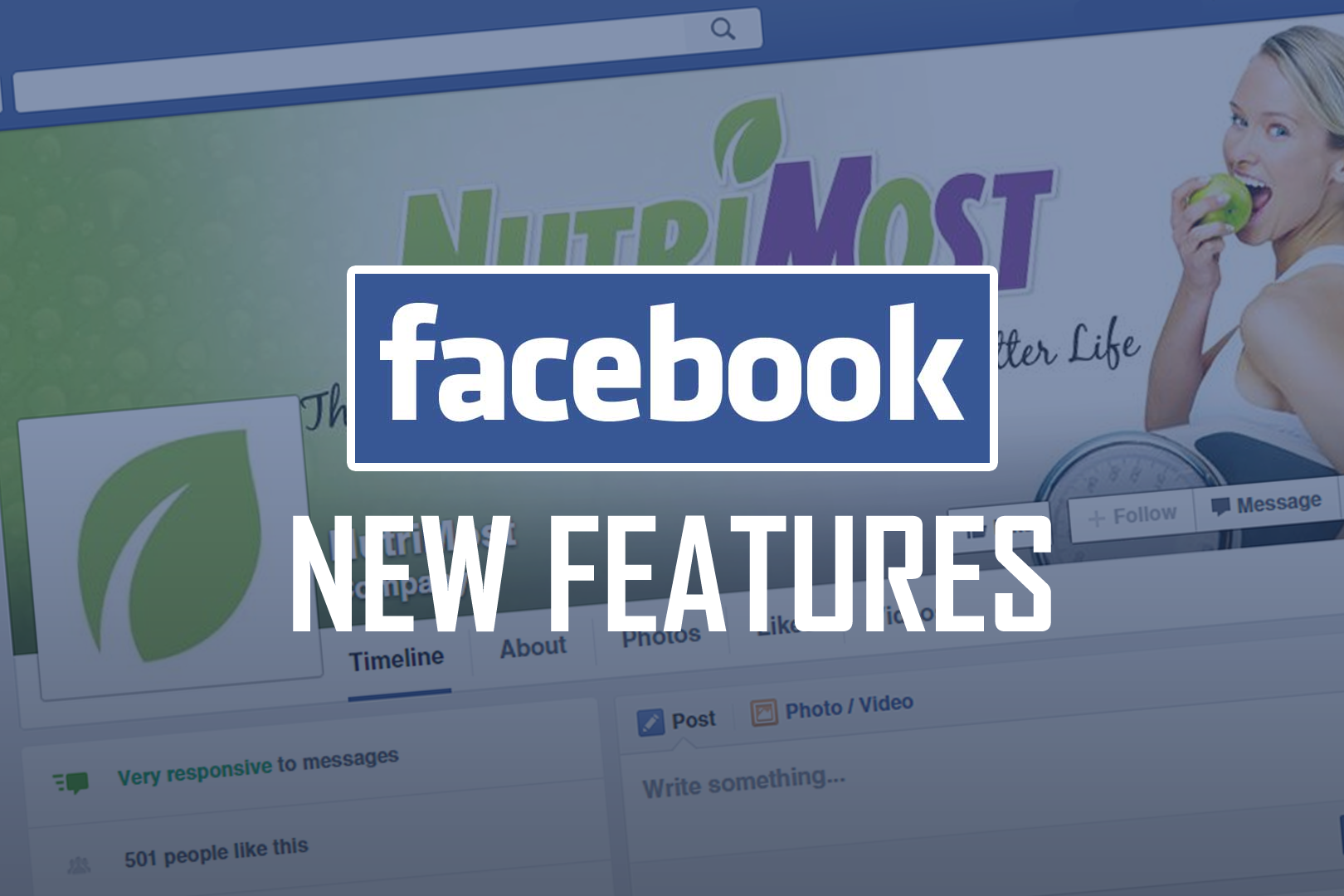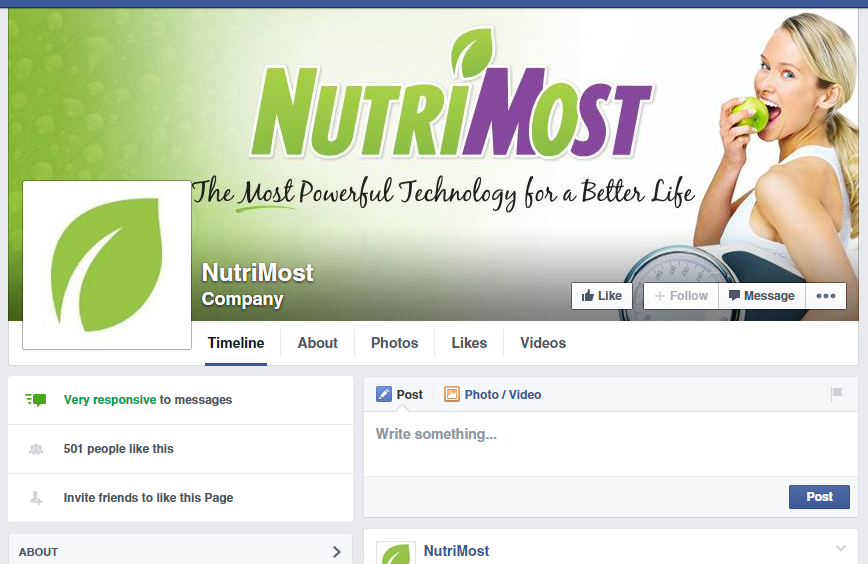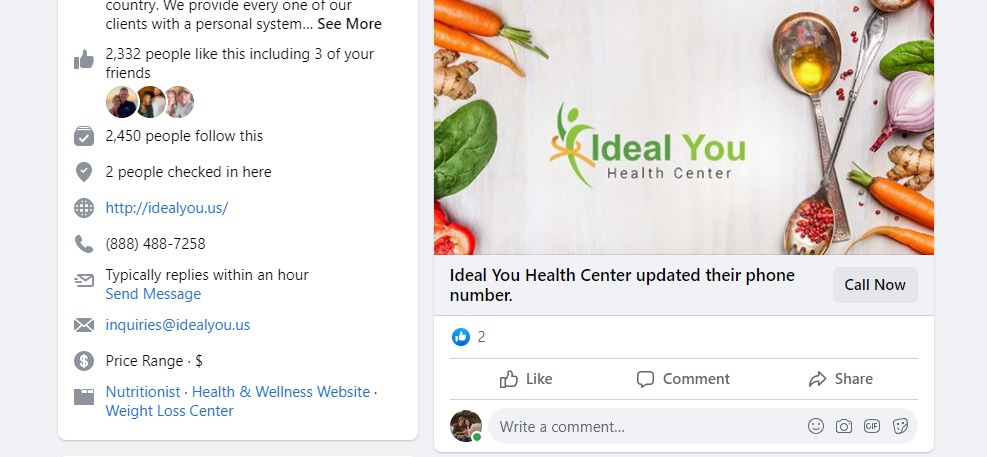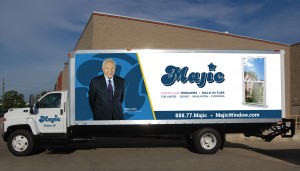Businesses that exist on social media are bound to receive frequent messages from customers containing questions or complaints. Customers may turn to social media to send questions about products, complaints about poor service, or praises about a great customer experience. When your customers send your business page a message, it’s imperative that they get a response. Customer service through social media isn’t optional like some business owners believe it to be. Customers expect businesses to provide social media customer service and your business needs to develop a strategy to properly address incoming messages. Fortunately for business page admins, Facebook has released new features that make tracking service metrics and improving online customer service a whole lot easier.
The Benefits of Facebook’s New Features
In an effort to help businesses improve their social media customer service efforts, Facebook has released a new rating system to identify the responsiveness of a business page. Facebook tracks two key metrics in order to calculate response ratings. Those key metrics are the percent of messages a business responds to and the time taken to respond. Facebook displays this new data under the ‘This Week’ insight box to the right of your page’s cover photo.
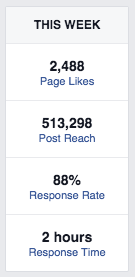
If you don’t see this additional information yet, don’t fret. This feature will be rolled out in stages. Only a select few pages currently have the ability to view their response ratings. Of course, in order to be able to track response metrics, Facebook page admins have to have allowed users to contact the page in their message settings. If a page has an exceptionally high response rate, a new green icon will be publicly displayed under the profile picture for all to see.
In order to receive this new honorary icon, page owners will have to have a response rate of 90% or above and an average response time of 5 minutes or below. It may seem like a tall order to have to respond within 5 minutes, but Facebook is also testing a new ‘Saved Replies’ feature which could drastically cut down your average response time. The Saved Replies feature, which is available now to a select group of business owners via the messaging interface, allows admins to create template replies to be stored for later use, or search through a list of previous replies to reuse.
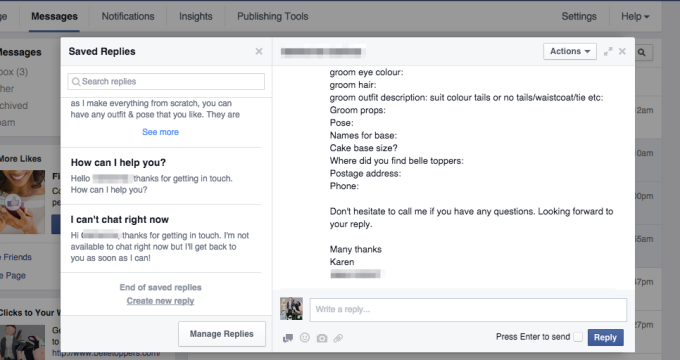
Businesses are offered a couple of sample replies that they can use right out-of-the-box, or they can create their own. Once a reply has been set up, it can be selected from a list of replies with the click of a button and automatically sent as a message. One of the handy features included with Saved Replies, is the ability to personalize messages with an auto-populating placeholder similar to what you would use with form email messages.
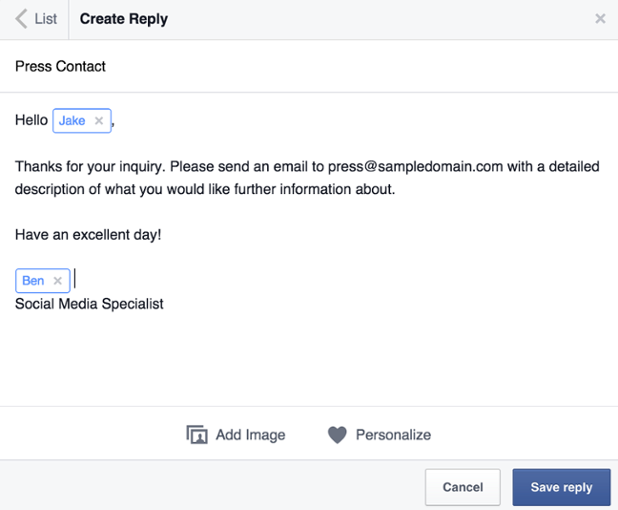
Auto-populating placeholders can be used to insert a persons name, the admins name, or a website URL. Larger businesses are more than likely utilizing professional helpdesk platforms like Zendesk or Freshdesk to handle customer service messages initiated via Facebook, so the new features will probably be more useful for small businesses.
Facebook will display your average response time in the about section of the business page. In the screenshot above, you can see that the business typically replies within an hour.
The Importance of Social Media Customer Service
In light of theses new additions to Facebook, we thought we’d also stress the importance of good social media customer service. If messages aren’t properly addressed, a business’s brand image could potentially be destroyed. One such example of poor social media customer service would be David’s Bridal. A few years back, a distraught customer posted a negative review to the business page when she had allegedly been refused customer assistance for having back tattoos. David’s Bridal did nothing to address the post and it served as a catalyst for a whole slew of negativity towards the brand. After a few days, her post received over 125,140 likes and 11,000 comments, many of which expressed similar experiences at other locations. It also sparked thousands of similar negative reviews and a boycott of the once popular place to shop for bridal dresses. David’s Bridal is just one of many companies that have received harsh backlash over the years for poor online customer service. Air India’s recent insensitive management incident, or HCL’s viral recruitment letter that came 3 years too late are additional examples of social media neglect. These disasters serve as reminders for just how important it is to provide good customer service on social media platforms. There are benefits for businesses who do provide stellar social care. Studies show that customers who have a positive customer service experience via social media are 71% more likely to recommend the brand to others. Moreover, customers who engage with companies via social media tend to spend 20-40% more money with those companies.
Developing A Better Service Strategy
In order to avoid facing a viral social media disaster like David’s Bridal or HCL, it’s important to understand what users’ service expectations are. It should be a given that customers expect social customer service to be accurate, supportive, and existent across a variety of social media platforms. Brands should also seek to craft responses that are both personal and humanized. What you may be unaware of is the response time customers expect from businesses. How fast should a business page respond to a customer message? According to Convince&Convert, 42% of customers complaining on social media expect responses to be posted in an hour or less.
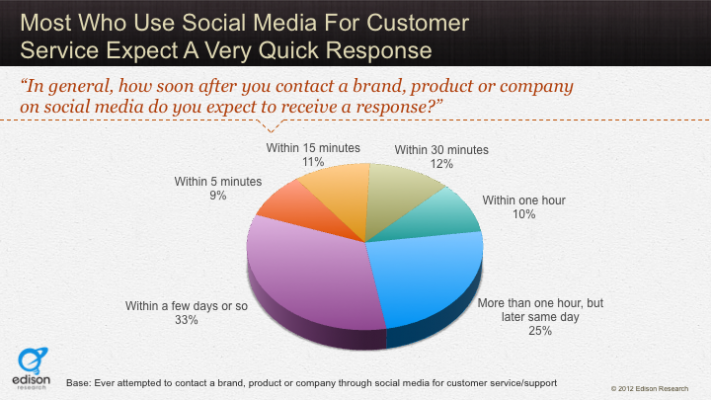
The chart above shows that two-thirds of all customers contacting a brand through social media expect to receive a response in the same day. This same day expectation puts a lot of pressure on businesses who might not be able to respond with that kind of speed, especially those businesses that aren’t able to utilize a follow the sun model. If a user sends a message after business hours, that message could languish overnight and drive response times up from just a few hours to 10-20 hours. Calculating response metrics can also be difficult because many social sites don’t track metrics for you. In order to find the average response time, a business would typically have to manually record each individual response time for messages received. Both of these issues are resolved with Facebook’s new update.
While you’re waiting for Facebook’s new responsiveness features to be added to your business pages, you may want to spend some time optimizing your response rate and response times. If you work to meet Facebook’s responsiveness criteria ahead of time, you’ll have a green icon right from the start. Should you need more guidance on how to properly address customer messages and reviews, be sure to read our blog post on the 5 steps to developing a positive online brand image. What do you think? Will these new features be helpful for your pages?
